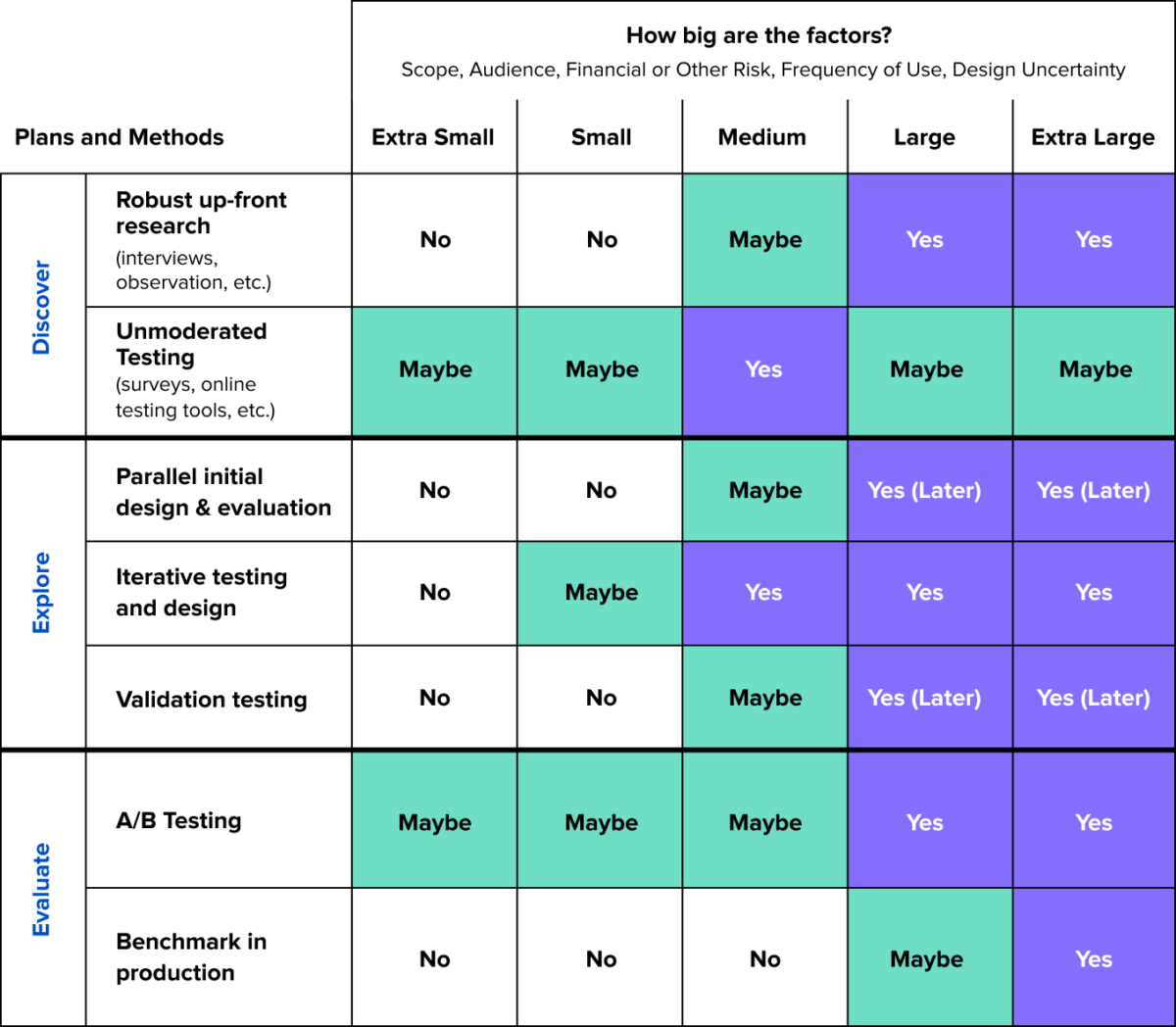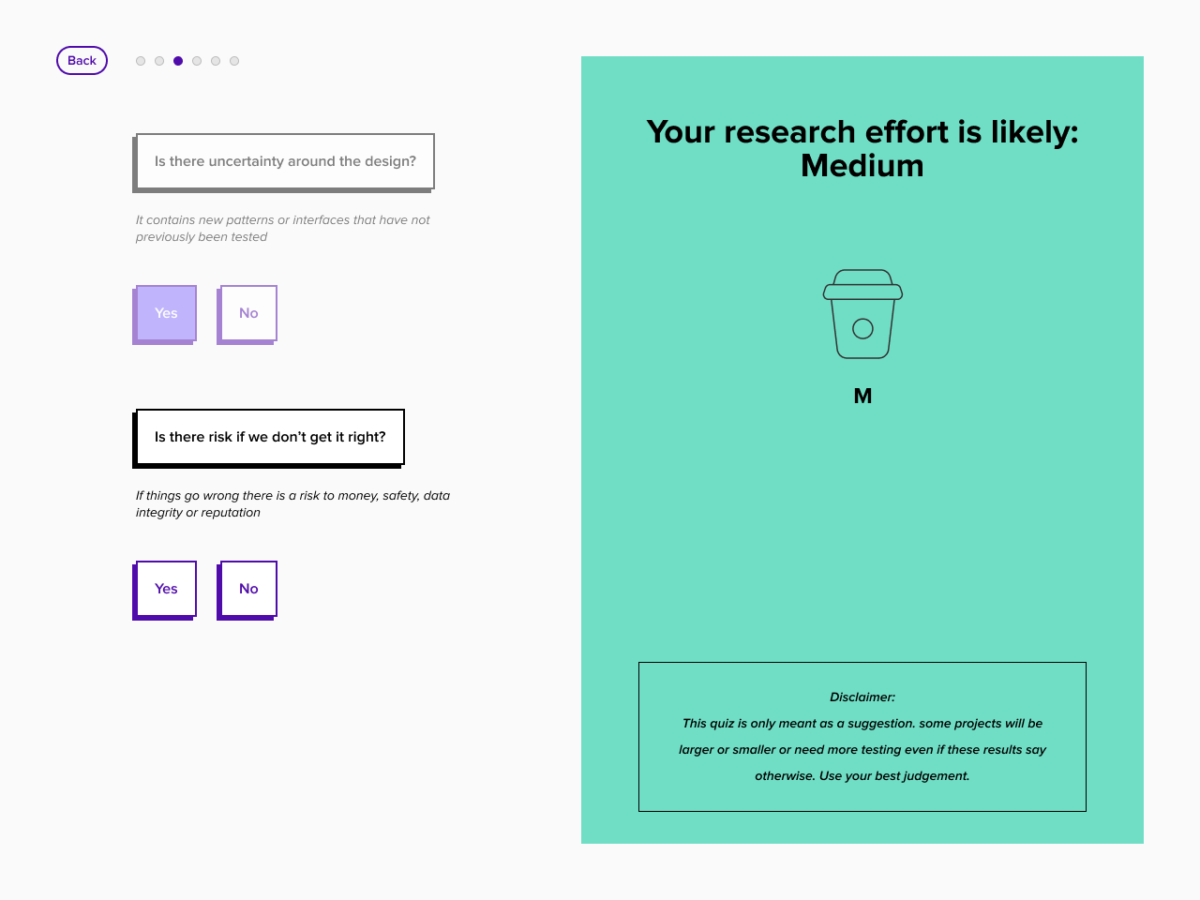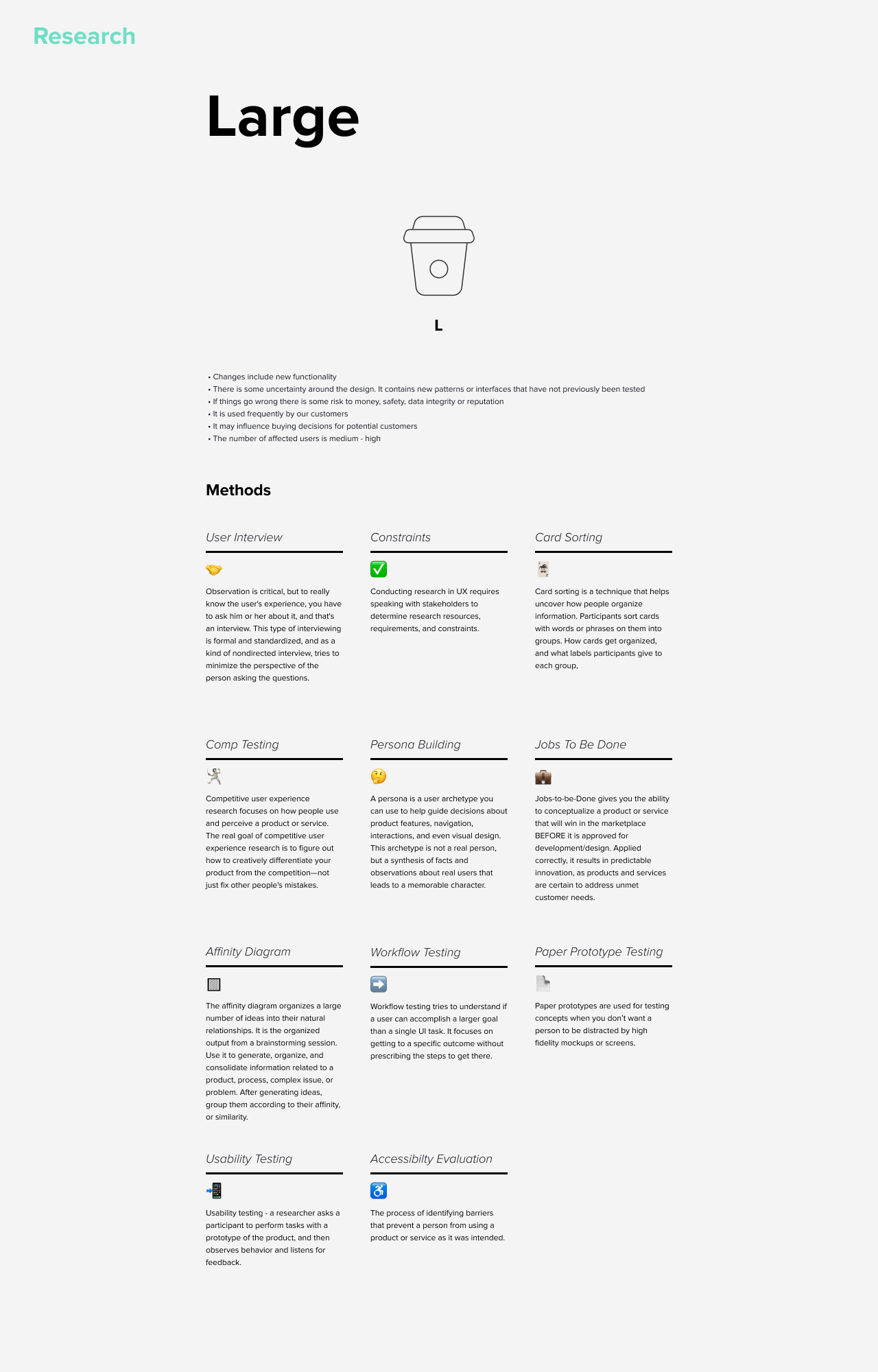I created a tool for estimating the intrinsic amount of risk for a design project. It is intended to help our team decide how much research should be completed given the impact of the project.

Analyzing
Risk
Overview
The amount of UX research you should do on a given project or feature depends on a lot of risk factors, but in particular these:
- Scope of the change (new functionality vs. small changes vs. large changes)
- Uncertainty of design (new pattern, team concerns, previous testing, etc.)
- Risk to money, safety, data integrity, or reputation (ours or customers’), if things go wrong
- Size of intended audience
- Frequency of use by intended audience
- Purchase influence of intended audience
As these risk factors increase, more UX research might be warranted. The chart below offers some rough guidelines for sizing your UX Research effort.
Note that the “sizes” refer to the potential size of the research effort based on risks, not the size of the design or development effort.

Factor Graph
This graph is a quick overview to help designers see at a glance what the quiz will be showing them. It is also to help designers who are familiar with or already know the risk associated to their project to remind them what types of research go into each risk category.


Risk Quiz
The risk quiz asks a series of questions and as you go it adjusts the risk size accordinly. For example if a project will only be seen by minimal users and have little impact to the business it won’t necessitate much research because the risk of it failing is negligible. If a project is crucial for the success or failure of the business it will jump straight to XL.
This quiz is only meant as a suggestion. Some projects will be larger or smaller or need more testing even if these results say otherwise. Designers are encouraged to use their best judgement.
Recommendations
After a designer inputs all of the factors into the risk quiz, the designer is presented with recommendations for the methodologies that should be used to test the design.
Methodologies
Each methodology links to a more robust write up for how to complete each research method. In addition to detailed instructions for performing the research, they also include the time, resources, difficulty and the people who should be involved.

